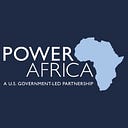The Missing Link: Understanding Power Transmission Financing
Sub-Saharan Africa (SSA) needs grid-connected electricity fast and in large quantities to deliver power to its 1 billion people and their businesses. Since its launch in 2013, Power Africa has focused on increasing Megawatts (MWs) of power and connections. One of the key barriers to connecting more people to more MWs of power is the missing link: transmission lines.
The scale of the transmission deficit is significant. According to one World Bank report, the combined length of transmission lines in 38 African countries is about 112,196 km, less than the length of the domestic transmission network of Brazil alone. The following figure illustrates the transmission deficit in SSA as compared to energy markets around the world.
Transmission of clean MW
Power Africa and its partners have brought 12,488 MW of power generation projects to financial close to date, and more grid-connected power is needed across the continent. Yet in many countries such as Ghana and Nigeria, large-scale generation capacity is increasing without sufficient transmission and distribution networks to deliver the electricity produced.
Furthermore, some countries already have excess generation capacity while their neighbors are experiencing deficits. As if building domestic transmission lines wasn’t hard enough, there is a huge need to build more cross-border transmission infrastructure to facilitate electricity trade between countries. These projects bring additional layers of difficulty, requiring complex political, technical, and financial negotiations.
There is presently considerable international interest in increasing the share of large-scale renewable energy in the SSA energy generation mix to avert future greenhouse gas emissions. The geographically-dispersed nature of wind, solar, and hydroelectricity resources mean that more transmission lines are needed to deliver that clean power to consumers. Therefore, not only does SSA need more and longer grids, it also needs stronger grids that can handle the increased variability of wind and solar power.
Investment Gap in Transmission Infrastructure
Power Africa is supporting development of key transmission lines, cross-border trade, and power sector planning across the continent, yet the finance gap is colossal. Despite recent increases in investment in other segments of the power value chain, private investment in transmission remains frightfully low. Historically, investment in generation has been roughly four times higher than transmission and distribution combined in sub-Saharan Africa.
Utilities in SSA know they need to increase their transmission infrastructure, however, most of these utilities operate at a loss, making them constrained financially. They are both unable to finance transmission lines from their own balance sheet, nor can they secure debt even for financially viable projects.
Enter the Transmission Finance Handbook
To address the financing gap for transmission infrastructure in SSA, Power Africa and the U.S. Department of Commerce’s Commercial Law Development Program (CLDP) have developed a handbook, Understanding Power Transmission Financing. The handbook captures the state of African utilities on transmission infrastructure and proposes options to access the much-needed finance for its development, including by increasing private finance.
The handbook explores the requirements to deliver both new build transmission infrastructure and upgrades. It provides insights into the planning process, electricity market considerations, institutional capacity needs, control and ownership issues, risk and responsibility allocations, regulatory issues, required enabling environment conditions, and the roles of public and private sector actors at each phase of development. These considerations inform proposed financing options and associated business models.
Business models discussed include independent power transmission, whole-of-grid concessions, merchant lines, industrial demand-driven models, and privatization. Considering the state of play, characteristics of each business model, and the urgent need for increased transmission infrastructure, the independent power transmission and whole-off-grid concession were identified as business models with the highest likelihood of success in SSA and were discussed at length.
Power Africa had previously identified priority transmission projects to connect sub-Saharan Africa in its Transmission Roadmap to 2030, articulating support needed to execute these projects from the donor community. This handbook delivers on the Action Plan in the roadmap by exploring the design of alternate financing models that may increase private finance. This handbook further complements Power Africa’s support to these priority projects and unlocking electricity trade in SSA.
Facilitating Transmission Finance
We hope Understanding Power Transmission Financing will stimulate dialogue between policymakers, energy sector professionals, and private financiers on how and where to pilot some of these innovative approaches to transmission investment. The need is great, especially in the context of climate change. Massive investment is needed to link new renewables to the grid to set African countries on a low-carbon path in the energy sector.
“Power Africa’s role in supporting Africa’s transition to a more sustainable, renewable, and cleaner energy future is key to advancing the [Biden] Administration’s ambitious climate action plan,” according to Gina Raimondo, U. S. Secretary of Commerce. Under this plan, “transmission financing will deliver against an even bigger and more focused set of climate finance goals. Understanding how it works and why it is important and could not be timelier.”
Power Africa will work with its partners to share the handbook widely and begin to implement its findings.
